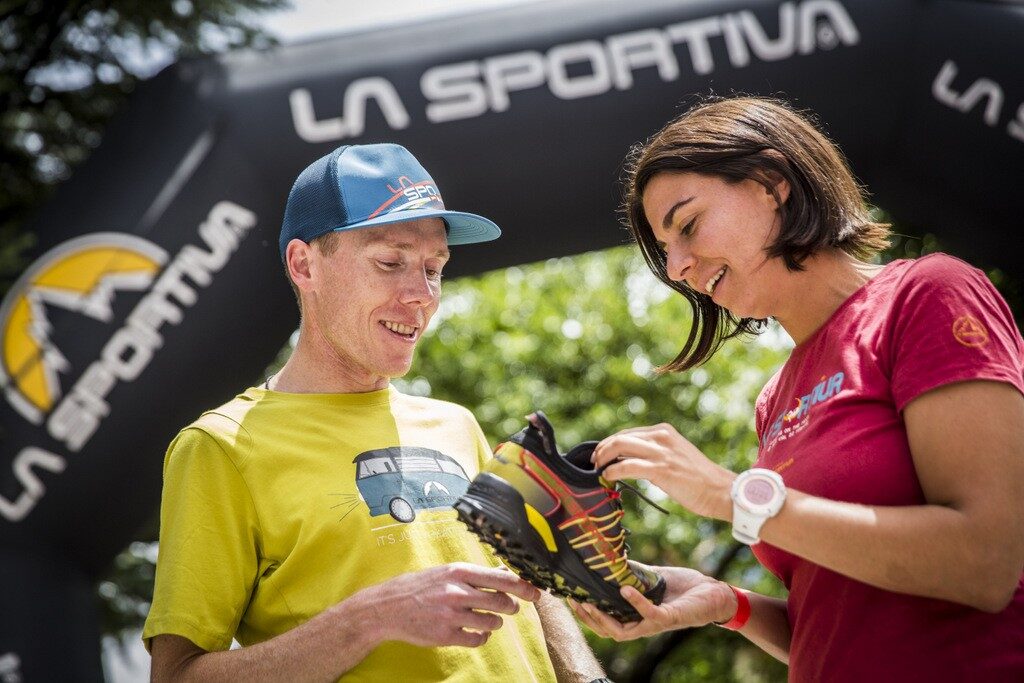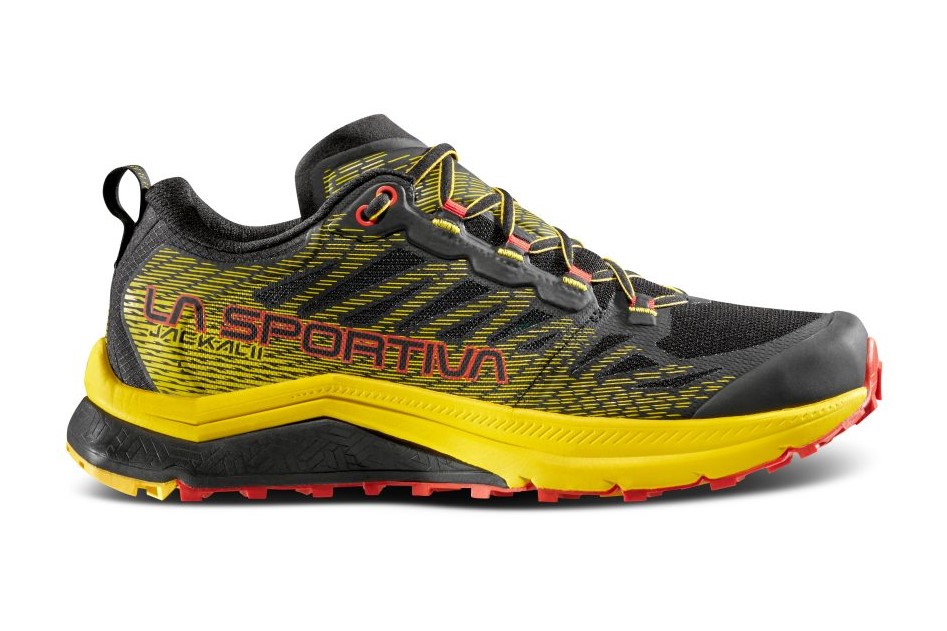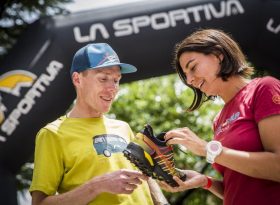
How to Choose Trail Running Shoes
In the trail and sky running world, more than in other disciplines, the shoe is essential. On the market there are different kinds of footwear styles, with different drops, different uppers, different volumes, different types of midsole … But which one is more suited to our needs?
What’s the difference between road-running and trail running shoes
A road running shoe really doesn’t have a difficult job to do. It just has to deal with the force to protect the foot from the repetitive impact from a hard surface, but when it comes to running off-road, the shoes have to offer three main features: Stability, Traction and Protection
Aside from the intended usage, another big difference between road running shoes and mountain running is their composition. Road running shoes are made with breathable and lightweight materials that encourage speed and responsiveness.
A trail shoe has a lot more to do than your average road shoe: it must deal with many different surfaces and most importantly lateral and torsional forces that any uneven terrain you find in trail running will throw at you. In this case, durable compounds for the sole and stiffer materials for the upper are the main focus in the development process.
What happens when you wear trail running shoes on pavement? (and vice versa
A good trail running shoe will keep your foot stable inside the shoe. It will give you traction when you need it on mud, snow as well as grip on a smooth wet rock. It must be comfortable and also offer some protection from rocks and sharp objects. Taking a road running shoe off road soon reveals its shortcomings as you start to struggle with stability, traction and protection, with the risk to slip or to twist your ankle in it. In addition, the upper materials may get damaged by roots and rocks, and debris could enter through the ankle collar causing blisters.
On the other hand, using tail running shoes when running on pavement or other abrasive surfaces, can wear down the rubber lugs on the outsole, which can compromise your grip when you switch back to off-roading. In short: can you wear road shoes on trails? You’ll use more and wear less choosing the right running shoe for the job.
Main features of trail running shoes
Cushioning:
This depends on what type of trail running you want to do. Runners looking to run the shorter distances will sacrifice a little bit of cushioning for trail feel that allows you to run faster over technical terrain by being lower to the ground and feeling the surface. Longer distance runners will look for some cushioning to keep the foot comfortable for the hours and many kilometres that you might be doing, for example in a trail ultra. Look for the type of material that’s providing the cushioning and be careful when choosing because a very soft cushioned shoe can often be less stable on any surface other than a smooth easy trail so you need to get a good compromise.
Drop:
This is really personal preference and can also depend on how you run. Heel strikers typically go for a more cushioned heel and most likely will be happy with a higher drop while mid or forefoot strikers are more likely to look for lower drop shoes. Just to be clear on what the term drop means. The drop is the difference in height from the back (heel) part of the shoe to the front part (forefoot) and given as a measurement in millimetres. You can also look for two numbers that give you the stack height that is the overall height of the outsole/midsole taken at the heel part of the shoe and at the forefoot and it is the difference between these two numbers that give you the drop. Higher stack heights mean generally that the shoe will provide more cushioning.
Protection and stability:
Look for the features you think you’ll need. A rock plate under the foot and toe guard are often included for protection. Some models feature protection on top of the foot with covers to stop debris entering with an integrated gaiter or lace cover. Others will have water resistant/waterproof protection. A heel counter and midfoot lace structure are features that will help to make the shoe stable. It’s important that your foot doesn’t rotate inside the shoe, so it feels secure when you are inside it. Many models will fit differently and in particular the width of the shoe can vary a lot between models. The shoe should feel secure but not tight. If the fit is too wide, then you won’t have enough stability and if it’sits too tight then you will experience pain as the foot gets hot and expands. A shoe that sits lower to the ground with less midsole height will also most likely be more stable as your foot lands closer to the ground surface and gives a lower centre of gravity.
Outsole construction:
The lugs are a giveaway sign that the shoe is suitable for off road running. Check how high the lugs are and the spacing of them so that you know if the shoe is better for mud or snow running or if it’s better for the dry or rocky trails. If the lugs are high and widely spaced, it means that it will perform well in muddy conditions. If the lugs are too close together then the mud will stick to (clog) the bottom of the shoe. The material mixture of the rubber outsole is really important, and a good sticky outsole compound will help you maintain traction on the wet smooth surfaces (wet wooden bridges or tree roots can be treacherous!). There is often a compromise between having a great sticky traction outsole and the durability of it and a specific trail brand will work hard to make sure you get both the traction and durability you need.
How to choose the right trail running shoes for different distances?

Shoes for short distances
Trail running comes in all distances and technical levels. In this category we can include training sessions, short races and of course, verticals (or only up races). In this case, lightness is everything. We don’t need a highly protective shoe, but it must be comfortable and reactive, in order to allow us to minimize energy expenditure.
Cushioning:Less important when focus is on lighter weight shoes for faster running.
Drop:For faster running a lot of people will tend to strike the ground further forward so a lower drop is often appreciated. But this is all down to how you run and personal preference.
Outsole construction:Depends on the terrain and the conditions. Short distance races on the mud still need a bulkier high lug outsole while a dry rocky trail will allow you to use a low height lug pattern outsole. Always look for a good rubber compound that gives excellent traction over the smooth rocks.
Protection:Going faster it’s ok to have a little less protection if it means a lighter more flexible shoe but every trail shoe for every distance should give you some toe protection.
Stability and fit:Depends on the terrain you are running over but with a more technical short distance you will want a good strong foothold, make sure your foot doesn’t move inside the shoe. A lower height midsole will be more stable but less cushioned.

Shoes for medium distances
When we talk about medium distances, we’re referring to all those 20-40 km runs on trails. In this case the choice of the right shoe should be oriented towards a fairly lightweight and reactive style, with good protections on the toe and on the sides of the upper. It must also be a “precise” shoe with an excellent grip, since in a classical mid-distance race you can run at top speed in the downhill, maintain a good rhythm in the rare situations where the ground is flat, and climb up a single track on technical terrains.
Cushioning:You need the right compromise for keeping the shoe light and flexible but allowing comfort for running for more than one hour.
Drop:With some faster sections and needing to run for more than one but less than 3 hours the most popular drop is 6mm for this kind of medium distance running.
Outsole construction:Depends on the type of surface and weather as to what type of outsole will work best but a good grippy rubber compound will help you in any condition.
Protection:This can also be surface and terrain dependent and having protection over sharp rocks is helpful. You won’t need much protection when the trail is smooth though, but all trail shoes will normally have some form of toe protection.
Stability and fit:Make sure the shoe is comfortable and not too tight but is still secure on your foot for running over a variety of terrain. The surface can be uneven so the shoe should hold the foot but still allow your foot to expand when it warms up.

Shoes for long distances
Finally, for the athletes who aim to run any distance longer than the 42 kilometres of the marathon, the main thing to consider is having a comfortable shoe (leaving out other aspects that may be important over short distances). Try to figure out wearing a shoe for 10-15 hours or more. If it is too tight and snug you could start feeling pain after just a few hours, if the sole is too hard you could have problems and pain on the arch. Therefore, it is important to wear a soft and comfortable shoe with good cushioning.
Cushioning:The longer distance is, the more important it is to have a comfortable shoe you can have on your feet for many hours. This will mean that runners will look for a more cushioned shoe as the distances increase.
Drop:It’s personal preference as some people will run ultra distances in zero drop but if you are just starting to run long distance then it’s much safer to have a minimum of 6mm of drop if you are running for a long time. Even the best and fastest forefoot runners start to run on their heel when they get tired so don’t risk getting injured by starting out in a low drop shoe. A long distance shoe will normally have 6 – 10mm of drop.
Outsole construction:Making the shoe lighter helps save energy as you run long distances so keeping the outsole lugs smaller helps. Your long distance shoe should have enough lugs to grip for slippery soft surfaces but not too much in order to keep weight down. The rubber mix is very important for long distances and for long running you need a good balance between the durability and best grippy rubber for traction on wet smooth surfaces.
Protection and stability:Comfort and cushioning are prioritised over protection and stability and the running speed is lower so you will normally see less protective and stable features on a long distance shoe but enough to help you cover the variety of terrain you might find.
Fit:Comfort is the big thing and so you need to make sure the shoe has enough elasticity in the upper to allow for the small amount of expansion and contraction the foot experiences when the temperatures change and as the foot heats up during running. It shouldn’t feel tight or constricting when you put the shoe on both in length and width across the foot but should feel secure.










